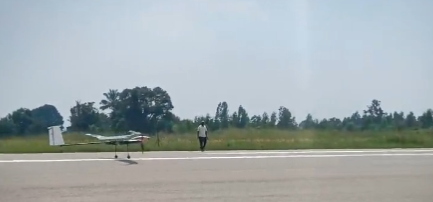SOURCE: RAUNAK KUNDE / NEWS BEAT / IDRW.ORG

Bangaloru-based NewSpace Research and Technologies Pvt Ltd (NRT) has achieved significant progress in the development of its Solar Powered Unmanned Aerial Vehicle (UAV) for high-altitude and long-endurance missions. The company has begun Phase 2 of this innovative project, having completed the first phase of its 7.5-meter wingspan technology demonstrator.
Last year, NRT conducted tests using technology demonstrators launched from a speeding multi-utility vehicle on the runway at HAL’s testing and factory airbase in Bangalore, Karnataka. However, a recent video shared by NRT showcased the technology demonstrator flying independently, demonstrating its autonomous capabilities.
NRT is now gearing up to develop a larger sub-scale prototype featuring a 16-meter wingspan, followed by an even more substantial model with a 24-meter wingspan. The ultimate goal is to fabricate a High Altitude Pseudo-Satellite (HAPS) with a remarkable 59-meter wingspan, which promises to be a game-changer in the field of aerial surveillance and communication support.
The Ministry of Defence has recognized the potential of NRT’s technology and signed a design and development contract for a High Altitude Pseudo-Satellite (HAPS). This cutting-edge aircraft is designed to perform extended surveillance operations and provide critical communications support by remaining airborne for months on end.
The HAPS is characterized as an autonomous, solar-powered unmanned aerial system (UAS) with the capability to cruise at an altitude of 65,000 feet. Remarkably, it is engineered to stay in flight for over 90 consecutive days, offering unprecedented endurance and coverage for various applications.
NOTE : Article cannot be reproduced without written permission of idrw.org in any form even for YouTube Videos to avoid Copy right strikes. Websites doing illegal reproductions will get DCMA and Legal Notices.